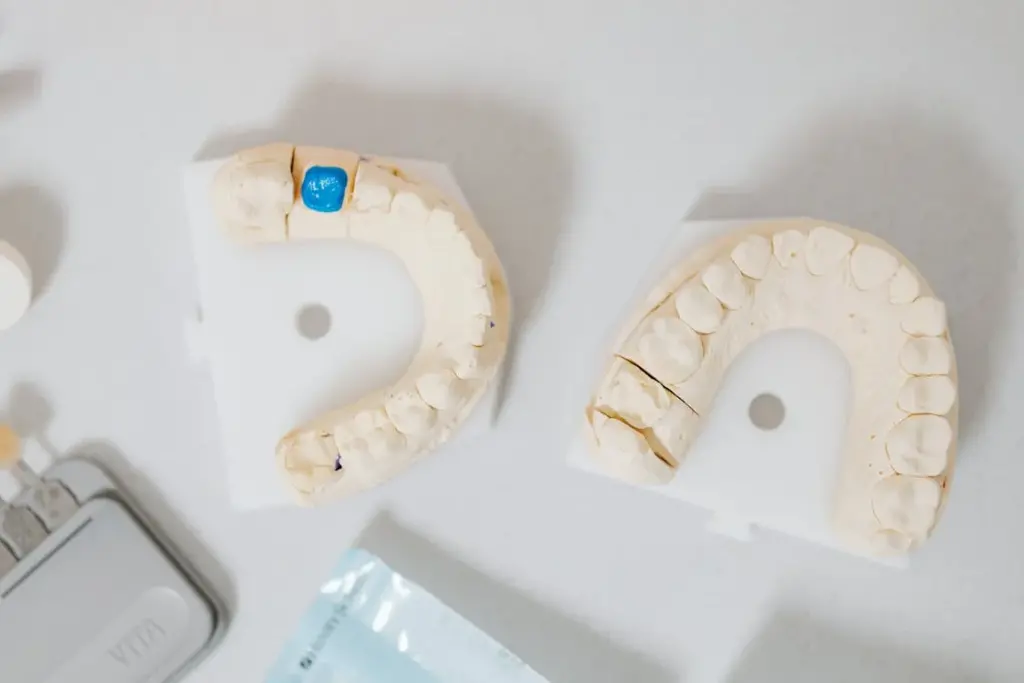Dental crowns are one of the most common methods used in modern dentistry to restore and protect teeth. They play a significant role in maintaining oral health by covering and reinforcing damaged or weakened teeth. This guide provides a clear overview of dental crowns, when they’re needed, the types available, and how to care for them.

What Are Dental Crowns?
A dental crown is a cap placed over a tooth to restore its shape, size, and appearance. Made from ceramic, metal, or a combination of both, crowns are custom-designed to fit each patient’s mouth. Crowns are designed to improve the aesthetics of a smile while also providing functional benefits. By covering the tooth entirely, they restore its ability to chew and bite properly. They also serve as a protective layer, reducing the chance of additional damage.
When Do You Need a Dental Crown?
One common reason for needing a crown is after a root canal treatment. During this procedure, the tooth’s internal structure is cleaned and sealed, but this process can leave the tooth more fragile. A crown is placed over the treated tooth to provide long-term protection and support, ensuring it remains strong and functional despite losing its inner structure.
Another situation where crowns are often used involves teeth with large fillings. Over time, these fillings can weaken the remaining tooth structure, making it more prone to cracks or breaks. Covering the tooth with a crown minimizes the risk of further damage, helping preserve the tooth for years to come.
Crowns are also an effective solution for addressing teeth that have fractures or significant wear due to habits like clenching or grinding. These issues can compromise the tooth’s strength and functionality, leading to discomfort or difficulty chewing. Crowns restore the tooth’s durability and improve its appearance, providing a natural and long-lasting solution.
What Are the Different Types of Crowns?
Dental crowns come in various materials, each designed to meet specific needs based on durability, functionality, and appearance. Choosing the right type of crown depends on factors like the location of the tooth, the patient’s aesthetic preferences, and the functional demands on the tooth. Here’s a breakdown of the most common types of crowns and their benefits:
- Porcelain or Ceramic: These closely resemble natural teeth, making them the top choice for visible teeth as they blend seamlessly into a smile.
- Metal Alloy: Made from materials like gold, these crowns are incredibly durable and long-lasting, ideal for teeth that aren’t highly visible.
- Porcelain-Fused-to-Metal: These combine the strength of metal with the aesthetic appeal of porcelain, offering a versatile solution for a variety of dental needs.
How Do You Care for Your Crown?
After placement, crowns need regular cleaning and maintenance. Daily brushing and flossing help prevent plaque buildup around the crown and protect nearby teeth. Using non-abrasive toothpaste can also be beneficial to avoid scratching the crown’s surface.
Routine dental checkups are necessary to monitor the crown’s condition. During these visits, dentists can identify potential issues, such as wear or loose edges, and address them early to prolong the crown’s lifespan. Avoiding hard or sticky foods can further reduce the chance of damage.
Discuss Crowns With Your Dentist
Dental crowns provide an effective way to restore teeth and enhance functionality. If you’re exploring options for tooth restoration, speak with your dentist. They can help determine whether a crown is the right choice and guide you through the options available. Schedule your consultation today and learn more about tailored solutions for your dental health.

